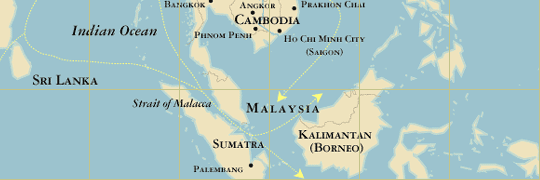|
|
|




   
The fact that Indian Hindu and Buddhist civilization came to most of Southeast Asia via the maritime, and, to a lesser extent, overland trade routes rather than through colonization or conquest may explain why each part of the region retained its distinctiveness even while borrowing from Indian Buddhism and its art. Every country or kingdom looked to India for different reasons, was receptive to different factors, and then modified and interpreted imported elements to suit its own tastes, a process that is evident in the wide variety of artistic styles present in Southeast Asian Buddhist art. Buddhism and its iconography were brought not only by Indian and later by Sri Lankan missionaries but also by monks who went to study in India's famed monasteries and pilgrims who journeyed to the places associated with Shakyamuni Buddha's life. When these travelers returned to Southeast Asia, they brought both memories and such tangible souvenirs as portable shrines, sculptures, votive tablets, and manuscripts.
Next
|
|